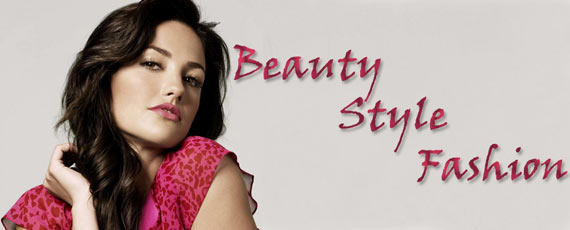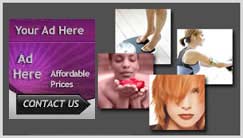
A General view on Acne, Causes and its Treatments
Acne and Over Use of Personal Cosmetics by Teenagers
Contemporary American cultural practice promotes and accepts external physical beauty above all else. It is then no wonder that the cosmetics industry is an enormous market.
Hair care products alone represent nearly a $10 billion industry internationally. Fervently the cosmetics industry touts itself as the savior for the physically unfit of both the young and old alike.
Feverishly, citizens of the collective west race to acquire and apply as much personal beautification products as possible in order that they might fit into a piece of the ideal physical jigsaw puzzle.
The puzzle's overall image being generated largely by sweeping cosmetic industry marketing campaigns leaves the general consumer reeling at all of the options.
Realistically, when it comes to personal beauty, less is absolutely more.
For example, teens and pre-teens (the most susceptible demographic to peer scrutiny) will begin to apply make up and cosmetics at a very young age to appear older or more mature.
For example, teens and pre-teens (the most susceptible demographic to peer scrutiny) will begin to apply make up and cosmetics at a very young age to appear older or more mature.
Girls will slather lipstick, mascara, nail polish and hairspray all over themselves in order to represent themselves as the picture of beauty.
Boys will use hairspray and other cosmetics to a lesser degree but are still susceptible to the peer pressure that promotes fitting in and thus appearing perfect through use of personal cosmetics.
Boys will use hairspray and other cosmetics to a lesser degree but are still susceptible to the peer pressure that promotes fitting in and thus appearing perfect through use of personal cosmetics.
Alternatively, acne is a major concern for teenagers prompting a whole other arm of the cosmetics industry. Although acne is sometimes caused by medical conditions or more natural processes such as changing hormones, much of teenagers' acne eruptions are caused due to overuse of personal cosmetics.
Caustic substances such as hairspray will place a layer of film over the skin. This extra layer will cause the pores to become clogged with pollutants and result in acne eruptions. Foundations that are used too liberally or are not vigilantly cleaned up after will result in similar skin eruptions. Ironically, these external beautification products oftentimes result in unwanted physical reactions resulting in a need for purchase of additional cosmetic products.
Use of personal cosmetics should simply fall in a line of accentuating an already existing natural beauty. Cosmetics should serve as a highlighter.
Less is absolutely more when it comes to personal appearance, health and personal satisfaction.
Less is absolutely more when it comes to personal appearance, health and personal satisfaction.
Available Treatments
There are many products sold for the treatment of acne, many of them without any scientifically-proven effects. However, a combination of treatments can greatly reduce the amount and severity of acne in many cases. It is highly advisable to ask a dermatologist about the tradeoffs between these treatments for any individual case, especially when considering using any of them in combination. There are a number of treatments that have been proven effective:
Killing the bacteria that are harbored in the blocked follicles. This is done either by the intake of antibiotics like tetracyclines, or by treating the affected areas externally with bactericidal substances like benzoyl peroxide or erythromycin. However, reducing the P.acnes bacteria will not, in itself, do anything to reduce the oil secretion and abnormal cell behaviour that is the initial cause of the blocked follicles. Therefore, acne will generally reappear quite soon after the end of treatment-days later in the case of topical applications, and weeks later in the case of oral antibiotics.
Reducing the secretion of oils from the glands. This is done by a great daily oral intake of Vitamin A derivates like isotretinoin over a period of a few months. Isotretinoin has been shown to be very effective in treating severe acne and is effective in up to 80% of the patients. The drug has a much longer effect than anti-bacterial treatments and will often cure acne for good. The treatment requires close medical examination by a dermatologist since the drug has many known side effects (which can be severe). At the end of the initial treatment, about 25% of patients need to take a second treatment for another few months to obtain desired results. The most common side effects are dry skin and nosebleed. It can also permanently damage the liver and, some studies suggest, cause depression. Because of this, the drug is typically used given a last resort after milder treatments have proven insufficient. The drug also causes birth defects if women become pregnant while taking it. For this reason, female patients are required to either use birth control or vow abstinence while on the drug.
Normalizing the follicle cell lifecycle. A group of medications for this are topical retinoids such as Tretinoin (brand name Retin-A), Adapalene (brand name Differin) and Tazarotene. Like isotretinoin, they are related to Vitamin A, but they are administered as topicals and generally have much milder side effects. They can give significant irritation of the skin, but are probably rather less nasty than isotretinoin because less of it circulates in the bloodstream. The retinoids appear to influence the cell creation and death lifecycle of cells in the follicle lining. This helps prevent the hyperkeratinization of these cells that can create a blockage. Retinol, a form of Vitamin A, has similar but milder effects and is used in many over-the-counter moisturizers and other topical products. The topical retinoids are relatively new and not as widely used as the other treatments as of the year 2004.
Exfoliating the skin. This can be done either mechanically, using an abrasive cloth or a liquid scrub, or chemically. Common chemical exfoliating agents include salicylic acid and glycolic acid, which encourage the peeling of the top layer of skin to prevent a build-up of dead skin cells which combine with skin oil to block pores. It also helps to unblock already clogged pores. Note that the phrase "peeling" is not meant in the visible sense of shedding, but rather as the destruction of the top layer of skin cells at the microscopic level. Depending on the type of exfoliation used, some visible flaking is possible. Moisturizers and anti-acne topicals containing chemical exfoliating agents are commonly available over-the-counter.
Hormonal treatments. In females, acne can be improved with a combined oestrogen/progestogen contraceptive pill. Cyproterone (Diane 35) is particularly effective at reducing androgenic hormone levels and is the best treatment if blood tests show abnormally high levels of androgens.
Phototherapy. It has long been known that short term improvement can be achieved with sunlight. However studies have shown that sunlight worsens acne long-term, presumably due to UV damage. More recently, visible light has been successfully employed to treat acne- in particular intense blue light generated by purpose-built fluorescent lighting, or lasers. Used twice weekly, this has been shown to reduce the number of acne by about 64% . The mechanism appears to be that the porphyrins generated by the P. acnes, under irradiation by blue light, generate free radicals damaging, and if consistently applied over several days, ultimately kill the bacteria . Extensive basic science and clinical work first initiated by dermatologists Yoram Harth and Alan Shalita have shown that intense blue/violet light (405-425 nanometer) can decrease the number of inflammtory acne lesion by 60-70% in 4 weeks of therapy. Since porphyrins are not otherwise present in skin, and no UV light is employed, it appears to be safe, and has been licensed by the U.S. FDA [4] . However, the equipment is relatively expensive; several hundred US dollars upwards (c. 2004), and works best for mild-moderate acne.
Popping a pimple or any physical acne treatment should not be attempted by anyone but a qualified dermatologist. Pimple popping irritates skin, can spread the infection deeper into the skin and can cause permanent scarring.
Future Treatments
Lasers have been in use for some time to reduce the scars left behind by acne, but research is now being done on lasers for prevention of acne formation itself. The laser is used to produce one of the following effects:
to burn away the follicle sac from which the hair grows
to burn away the sebaceous gland which produces the oil
to induce formation of oxygen in the bacteria, killing them
Since lasers and intense pulsed light sources cause thermal damage to the skin there are concerns that laser or intense pulsed light treatments for acne will induce hyperpignmented macules (spots) or cause long term dryness of the skin. As of 2005, this is still mostly at the stage of medical research rather than established treatment.
to burn away the follicle sac from which the hair grows
to burn away the sebaceous gland which produces the oil
to induce formation of oxygen in the bacteria, killing them
Since lasers and intense pulsed light sources cause thermal damage to the skin there are concerns that laser or intense pulsed light treatments for acne will induce hyperpignmented macules (spots) or cause long term dryness of the skin. As of 2005, this is still mostly at the stage of medical research rather than established treatment.
Because acne appears to have a significant hereditary link, there is some expectation that cheap whole-genome DNA sequencing may help isolate the body mechanisms involved in acne more precisely, possibly leading to a more satisfactory treatment. (Crudely put, take the DNA of large samples of people with significant acne and of people without, and let a computer search for statistically strong differences in genes between the two groups). However, as of 2005 DNA sequencing is not yet cheap and all this may still be decades off. It is also possible that gene therapy could be used to alter the skin's DNA.
Types of acne vulgaris and preferred treatments
Note: always consult a dermatologist to know what is best for you.
Comedonal (non-inflammatory) acne: local treatment with azelaic acid, salicylic acid, topical retinoids.
Mild papulo-pustular (inflammatory) acne: benzoyl peroxide or topical retinoids, topical antibiotics (such as erythromycin).
Moderate inflammatory acne: benzoyl peroxide or topical retinoids combined with oral antibiotics (tetracyclines).
Severe inflammatory acne, nodular acne, acne resistant to the above treatments: isotretinoin, or contraceptive pills with cyproterone for females with virilization.
Comedonal (non-inflammatory) acne: local treatment with azelaic acid, salicylic acid, topical retinoids.
Mild papulo-pustular (inflammatory) acne: benzoyl peroxide or topical retinoids, topical antibiotics (such as erythromycin).
Moderate inflammatory acne: benzoyl peroxide or topical retinoids combined with oral antibiotics (tetracyclines).
Severe inflammatory acne, nodular acne, acne resistant to the above treatments: isotretinoin, or contraceptive pills with cyproterone for females with virilization.
Acne rosacea
Rosacea (ro-ZAY-she-ah) sometimes called "Adult Acne" occurs in people of all ages, especially older women when they go through menopause. Two famous men with the affliction are W.C. Fields and former United States President Bill Clinton. The disorder is characterized by redness, pimples, and, in advanced stages, thickened skin. People who flush or blush easily are most at risk of developing rosacea.

























